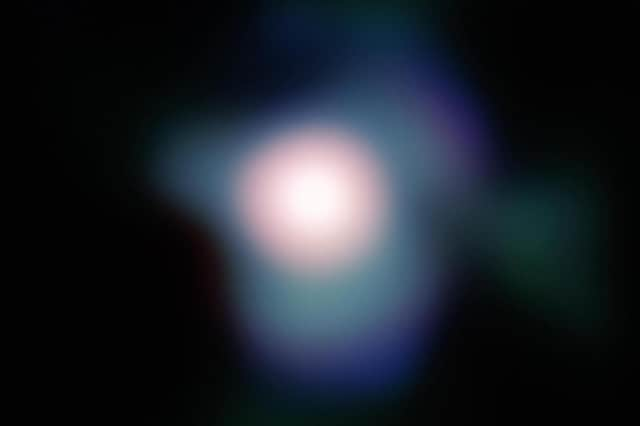Betelgeuse, a red super-giant star, is a ticking nuclear time-bomb that will one day be as bright as the Moon – Professor Alex Murphy


New research has shown that the dramatic dimming of the star’s light that might have heralded an imminent supernova as its core collapsed, was in fact simply due to a clump of dust partially blocking our view.
Betelgeuse is somewhere between 10 and 20 times the mass of our sun and, if located at the centre of our solar system, its surface would reach out almost to the orbit of Jupiter. At a mere 725 light years away, it’s also quite close to Earth.
Advertisement
Hide AdAdvertisement
Hide AdStars shine because of the energy being released by nuclear fusion in their cores. When a massive star reaches its red super-giant phase (nearing end of life), we know that the energy available from fusion has almost run out.
When this happens, the abrupt loss of energy generation will remove the internal pressure which has been holding the star up against its own gravity. This sudden pressure drop then leads to a massive explosion, so bright that it would rival the moon, and would be easily visible to us, even in the daytime.
We expect this to happen to Betelgeuse in the next 10,000 years; the last such supernova seen by the naked eye happened in 1604, before the invention of the telescope.
A thorough understanding of supernovae is still lacking. We can input all of our physics knowledge into a computer program to try to model the evolution of a red super-giant through its collapse and explosion. But even on the most powerful computers, such simulations are unable to reproduce many aspects of a supernovae as seen in other galaxies.
Cern, the European Organisation for Nuclear Research, famous for the discovery of the Higgs boson at the Large Hadron Collider, hosts several other facilities.
At one of these, researchers at the University of Edinburgh are leading experiments to improve our understanding of the key nuclear reactions that take place in the final stages of the supernova.
Colleagues at the Paul Scherrer Institute, Switzerland, will extract about a milligram of a particular isotope from radioactive waste. This is then implanted into an oven at Cern which, upon heating, evaporates to form the source for a particle beam that is then accelerated to about seven per cent of the speed of light, and fired at a helium-filled gas cell.
The nuclear reactions between the beam and the helium are measured, by what are effectively advanced digital cameras, and with each, one at a time, we learn about the mysterious supernova.
Advertisement
Hide AdAdvertisement
Hide AdSince it seems that we may have to wait a few more years to see a supernova up close and personal in our own galaxy, research such as this is essential if we are to advance our scientific understanding of one of Nature’s greatest wonders.
It’s one of many such examples that demonstrate that in science, as in so many areas, continued international collaboration is our best hope.
Alex Murphy is a fellow of the Royal Society of Edinburgh, and professor of nuclear and particle astrophysics at the University of Edinburgh. The RSE is Scotland's National Academy, which brings great minds together to contribute to the social, cultural and economic well-being of Scotland.
A message from the Editor:
Thank you for reading this article. We're more reliant on your support than ever as the shift in consumer habits brought about by coronavirus impacts our advertisers.
If you haven't already, please consider supporting our trusted, fact-checked journalism by taking out a digital subscription.
Comments
Want to join the conversation? Please or to comment on this article.
